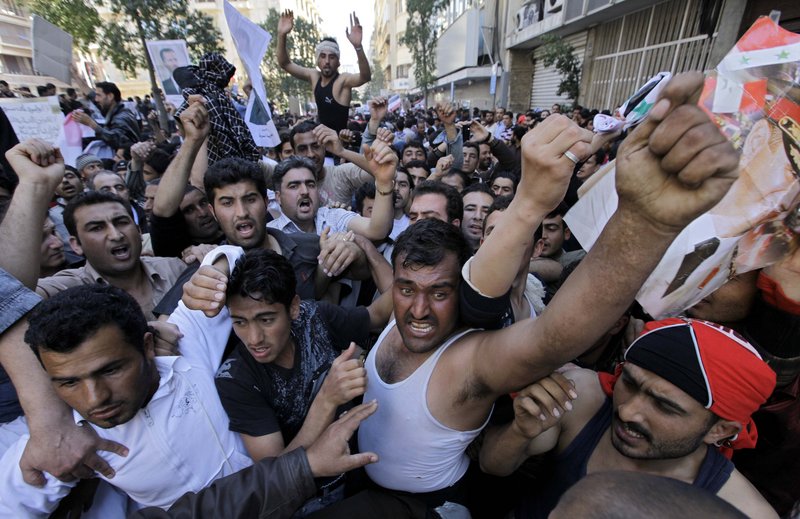DAMASCUS, Syria — Syrian President Bashar Assad wavered between cracking down and compromising Monday in one of the Middle East’s most authoritarian and anti-Western nations as thousands of protesters in a southern city defied security forces who fired tear gas to disperse them.
The unrest in Syria, a strategically important country of 23 million people, could have implications well beyond the country’s borders given its role as Iran’s top Arab ally and as a front line state against Israel.
“Nobody has an interest in Syria going aflame,” said Hilal Khashan, a political science professor at the American University of Beirut. “Syrian instability has the potential of destabilizing the entire region.”
The southern city of Daraa — parched by drought, rural and impoverished — has become the flashpoint for 10 days of anti-government protests in a country that has a history of brutally crushing dissent. At least 61 people have been killed since March 18, according to Human Rights Watch.
Touched off by the arrest of several teenagers who scrawled anti-government graffiti on a wall in Daraa, the protests exploded nationwide on Friday. Security forces launched a swift crackdown, opening fire in at least six locations around the country — including the capital, Damascus, and the country’s main port of Latakia.
Assad, 45, is now facing down the most serious threat to his family’s four decades of authoritarian rule in this predominantly Sunni country, which is ruled by minority Alawites.
The government has tried to calm the situation with concessions. Assad is expected to address the nation as early as today to announce he is lifting a nearly 50-year state of emergency and moving to annul other restrictions on freedoms.
Send questions/comments to the editors.



Success. Please wait for the page to reload. If the page does not reload within 5 seconds, please refresh the page.
Enter your email and password to access comments.
Hi, to comment on stories you must . This profile is in addition to your subscription and website login.
Already have a commenting profile? .
Invalid username/password.
Please check your email to confirm and complete your registration.
Only subscribers are eligible to post comments. Please subscribe or login first for digital access. Here’s why.
Use the form below to reset your password. When you've submitted your account email, we will send an email with a reset code.